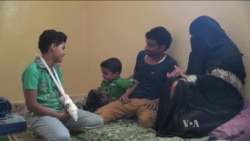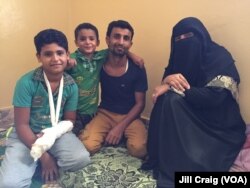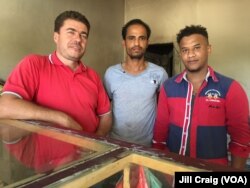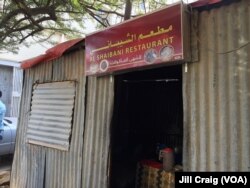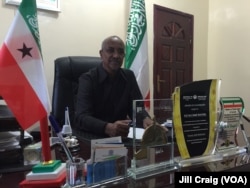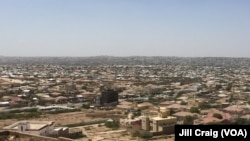In an unusual development, people from war-torn Yemen are fleeing to a region whose own citizens have been scattered over the world by decades of conflict.
In the past year, nearly half of the 176,000 people who have fled Yemen’s conflict have gone to the Horn of Africa, according to the U.N. refugee agency. Many are Africans returning to their countries of origin, but about 26,000 are Yemenis with nowhere else to turn.
Wasiim Said Mohamed arrived in Somaliland in February with his wife and two sons. They fled Yemen after Houthi militants attacked their home in Aden.
Luckily, the family was not home, but Mohamed decided to move to Somaliland, which he knew was not under siege, and one of the few places that would accept Yemeni passports.
“This is the only country where the cost of living is cheap and there is good security and I can live with the people,” Mohamed said.
And he is one of the lucky ones with a job.
Bakery owner
Mohamed works at a bakery owned by his uncle’s Syrian friend, Abdulrahman Darwish.
Darwish had been living in Yemen since the 1980s, when he fled Syria due to violence during the time when Syrian President Bashar al-Assad’s father was president.
Darwish was working as a teacher in Yemen, but brought his family to Hargeisa last year to escape the conflict.
And now he’s trying to make a living from his bakery.
“The situation here is very good, but I’m lacking some materials and support,” Darwish said. “I want to leave and go to another country but it’s very difficult. I cannot take that risk at sea with my wife and two daughters. If I can get some legal way to Europe or elsewhere, I’ll be willing to do that.”
Safe, but stuck
Options for Yemeni refugees are limited.
Most don’t have the money to pay smugglers or attempt the long, dangerous route to Europe, which involves crossing the Gulf of Aden, then going by land through Egypt to access the Mediterranean.
And even then, many can’t get visas in Europe or even Turkey.
Somaliland may be safe and welcoming but it is poor. Unemployment is high. The UNCHR says that of the 10,000 people who have arrived here from Yemen, about 1,900 are Yemeni nationals.
There is no refugee camp in Somaliland.
The government says it is open to the idea, but the U.N. said refugee camps are not cost-effective and there are constant challenges with security. Additionally, the U.N. said the numbers don’t justify it at this time, since the number of arrivals has significantly decreased since July of 2015.
Refugee experience
Somaliland broke away from Somalia in 1991 after a three-year war, so many of the people here know the refugee experience first-hand, when they were living in countries like Yemen and Ethiopia.
Still, resources are limited, Somaliland’s Resettlement Minister Ali Saed Raygal said.
“The refugees are in the same situation as Somalilanders because the Somalilanders also don’t have enough jobs,” Raygal said. “So anyone who had skills, working in Yemen, he can do the same here. But we are trying to help them.”
Upon arrival, refugees are given food, medical care and cash – about $100 per person – from the U.N. They can also get transport within Somalia if they wish.
But it’s not enough for some, like Jihan Ali Abdullah, a recent Yemeni arrival to Hargeisa by way of the United Arab Emirates.
Thirty years old now, Abdullah said she moved to the UAE from Yemen when she was two.
Earn a living
One day, she said her employer in the UAE was unable to renew her work visa and she was given only days to leave the country. Somaliland or Yemen were her only options, Abdullah said.
She lives with her father’s friend in Hargeisa, who is helping her for now, but she says she has no way to earn a living.
“I want to go to a civilized country, I want to live,” said Abdullah. “I want to be stable financially. I want to go back to school, do something, make a life. Here is not life.”
But until Abdullah and the other Yemeni refugees can find that better life, they must make the best of things here in Somaliland.
PHOTO GALLERY: Refugees in Somaliland




